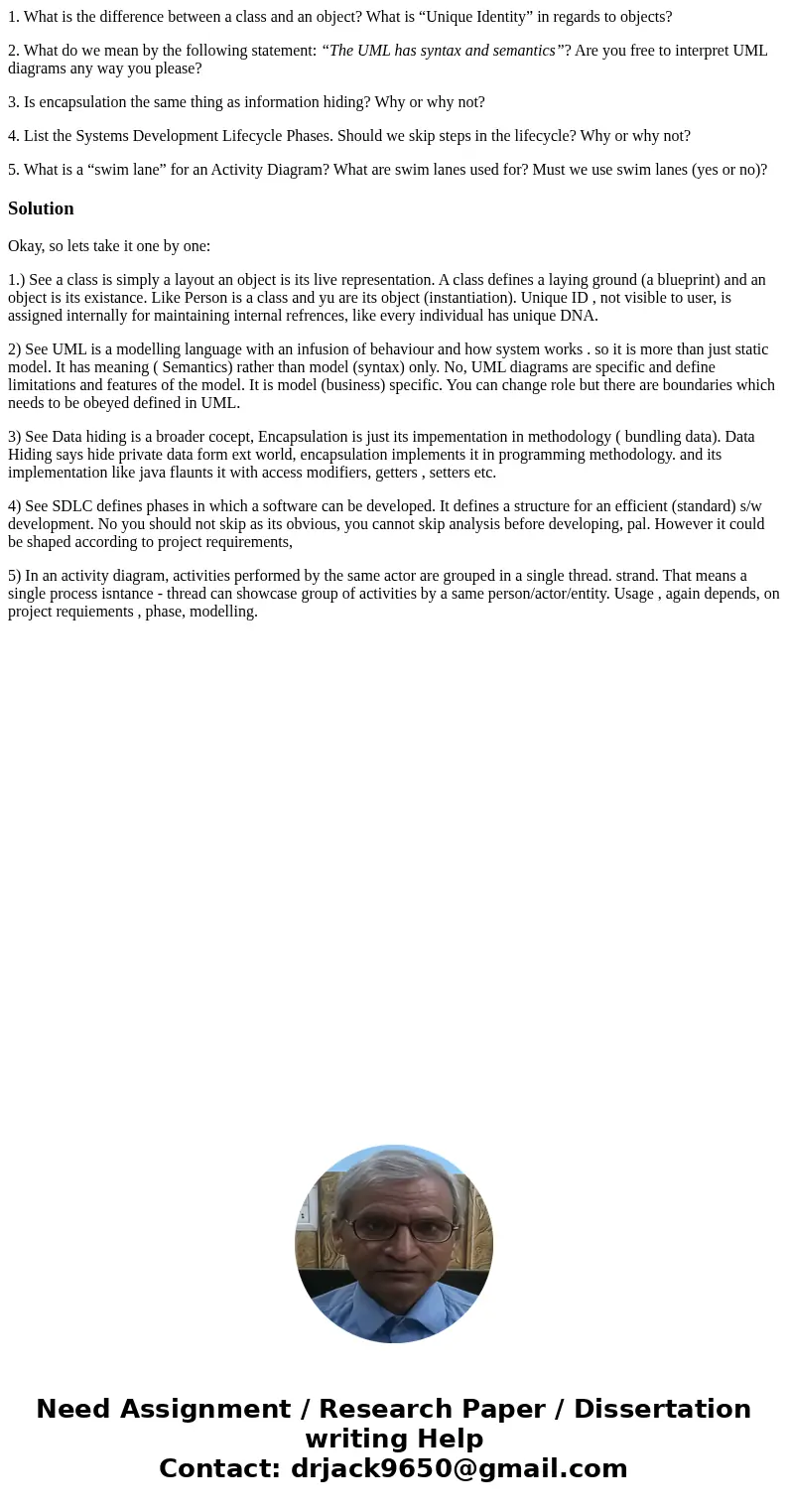1 What is the difference between a class and an object What
1. What is the difference between a class and an object? What is “Unique Identity” in regards to objects?
2. What do we mean by the following statement: “The UML has syntax and semantics”? Are you free to interpret UML diagrams any way you please?
3. Is encapsulation the same thing as information hiding? Why or why not?
4. List the Systems Development Lifecycle Phases. Should we skip steps in the lifecycle? Why or why not?
5. What is a “swim lane” for an Activity Diagram? What are swim lanes used for? Must we use swim lanes (yes or no)?
Solution
Okay, so lets take it one by one:
1.) See a class is simply a layout an object is its live representation. A class defines a laying ground (a blueprint) and an object is its existance. Like Person is a class and yu are its object (instantiation). Unique ID , not visible to user, is assigned internally for maintaining internal refrences, like every individual has unique DNA.
2) See UML is a modelling language with an infusion of behaviour and how system works . so it is more than just static model. It has meaning ( Semantics) rather than model (syntax) only. No, UML diagrams are specific and define limitations and features of the model. It is model (business) specific. You can change role but there are boundaries which needs to be obeyed defined in UML.
3) See Data hiding is a broader cocept, Encapsulation is just its impementation in methodology ( bundling data). Data Hiding says hide private data form ext world, encapsulation implements it in programming methodology. and its implementation like java flaunts it with access modifiers, getters , setters etc.
4) See SDLC defines phases in which a software can be developed. It defines a structure for an efficient (standard) s/w development. No you should not skip as its obvious, you cannot skip analysis before developing, pal. However it could be shaped according to project requirements,
5) In an activity diagram, activities performed by the same actor are grouped in a single thread. strand. That means a single process isntance - thread can showcase group of activities by a same person/actor/entity. Usage , again depends, on project requiements , phase, modelling.

 Homework Sourse
Homework Sourse